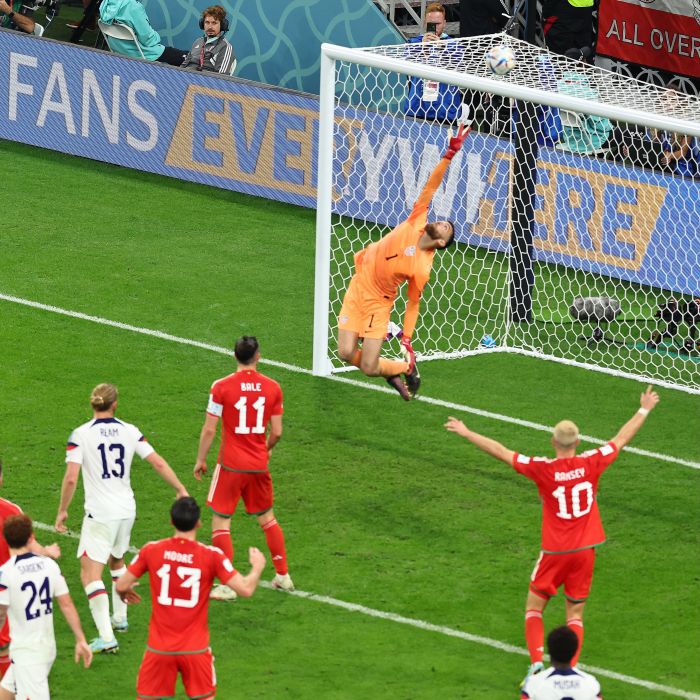Introduction to the Draw Play
What is a draw play in football? The draw play is a staple in football strategy. It is a type of running play disguised as a pass play. When executed correctly, a draw play can trick the defense into expecting a pass. This creates an opportunity for the offense to gain significant yardage. The aim is simple: mislead the defense to create space for the running back.

To unpack what is a draw play in football, imagine the quarterback dropping back as if to pass. Defensive players commit to a pass rush, moving away from the line of scrimmage. At the right moment, the quarterback hands the ball to the running back. With the defense out of position, the running back exploits the openings.
Timing and deception are key to the draw play. Offensive players must sell the illusion of a pass. They do this with convincing body language and movement. If successful, the draw play can be a game-changer, adding a dynamic layer to the offense. Its unpredictability makes it a favorite among coaches, especially in high-pressure situations where the defense is aggressive.
The effectiveness of a draw play hinges on the offense’s ability to deceive. As we delve deeper into the mechanics of this strategy, we’ll explore the roles each player performs. From offensive linemen to the quarterback, every position has a part in this crafty play.
The Mechanics of a Successful Draw Play
Breaking down the mechanics of a successful draw play in football requires attention to detail. First, players must convincingly mimic pass protection techniques. Offensive linemen start by backpedaling slightly, aiming to lure the defense into a pass-rushing mindset. The quarterback needs to act with precision. He drops back, scanning the field, feigning a pass attempt. This further sells the idea of a pass play.
While the defense’s attention is on the quarterback and receivers, the running back must stay patient. His timing is critical. He waits for the quarterback to draw the defenders in. Once the line of scrimmage starts to clear, the ball is handed to him. The running back then accelerates through the gaps, often created by the now out-of-position defense. It’s a simple yet effective plan that hinges on collective team deception.
Key elements of a successful draw play include the element of surprise, precise timing, and player coordination. The offense must operate like a well-oiled machine, where each component plays a vital part in the deception. If any player tips off the real intention too early, the defense may quickly adjust and thwart the effort. Thus, practicing and perfecting the draw play often becomes a priority for teams seeking to enhance their offensive playbook.
The Role of Offensive Linemen in Draw Plays
The offensive linemen are crucial in draw play success. They start the deception. They backpedal as if to block for a pass. This invites the defense forward. Once defenders commit to a pass rush, linemen shift tactics. Now, they must quickly create running lanes.
The linemen need careful timing for this. They must hold their blocks just enough. The goal is to delay, not overpower, the defense. As defenders rush past, running paths open up. Their role blends finesse with strength for this moment.
Often, offensive linemen are unsung heroes in draw plays. Their actions are subtle, but they shape the play’s outcome. They balance between pass protection and run blocking. This dual role makes for a deceptive front line.
Good communication is essential, too. Linemen work as a unit. They watch for each other’s cues. A single misstep can alert the defense. Teams invest many practice hours into refining this aspect. When done right, linemen turn a defender’s aggressiveness into an advantage for the offense.
Quarterback Techniques in Executing Draw Plays
The quarterback’s role in a draw play is pivotal. His performance can make or break the play’s success. Here are the techniques a quarterback must use to execute a draw play effectively:
- Sell the Pass: The quarterback starts by dropping back as if to pass. His movements must be convincing. He scans the field, looking for receivers. This action fools the defense into thinking a pass is coming.
- Timely Handoff: Timing is everything. After selling the pass, the quarterback hands off the ball to the running back. He must do this smoothly and without drawing attention.
- Decoy Movements: Even after the handoff, the quarterback continues his role as a decoy. He may carry out a fake pass action. This keeps the defense guessing.
- Reading the Defense: A good quarterback reads the defensive lineup. He looks for indicators on when best to start his deceptive movements. This awareness helps to maximize the play’s effect.
Coordination with other players is also critical. The quarterback must sync with offensive linemen and the running back. This creates a unified front that sells the draw play to the defense. Practice and preparation fine-tune these techniques. Attention to detail sharpens the quarterback’s ability to deceive. With practice, a quarterback can turn a draw play into a potent weapon in the team’s offensive strategy.

When to Use Draw Plays in a Game Situation
Coaches call draw plays at strategic moments. Here’s when using a draw play makes sense:
- Against an Aggressive Pass Rush: When the defense is known for a strong pass rush, a draw can exploit gaps as they come forward.
- On Passing Downs: It works well on long second or third downs. The defense expects a pass, making them vulnerable to the draw.
- Before the Half or Game End: Using a draw near these times can surprise the defense. They may expect a pass to stop the clock.
- Out of Shotgun Formation: It can hide a quarterback’s intention to hand off the ball, increasing deception.
In all these situations, surprise is key. If the defense catches on, the play will likely fail. Thus, timing and execution must be precise. The offense needs to be aware of the defense’s movements and choose the right moment for a draw. They must sell it as a pass to the last second. This ensures gaps in the defense which the running back can then use.
A draw is less about brute force and more about outsmarting the defense. It requires intelligence, quick thinking, and sharp execution. When done right, it’s a powerful tool in a coach’s playbook.
Key Defenses Against Draw Plays
Defending against draw plays requires strategic awareness and discipline. Here are key defensive tactics:
- Maintain Gap Integrity: Defenders must hold their assigned gaps. They should not over-pursue, but stay alert for the run.
- Disciplined Pass Rush: A controlled pass rush is crucial. Rushers must recognize run cues and adjust quickly.
- Read Offensive Linemen: Look for lineman behavior. It may tip off an impending draw.
- Linebackers on Alert: Linebackers need to stay focused on the backfield action. Quick recognition of a draw can lead to a stop.
- Secondary Support: Defensive backs provide run support when needed. They should be ready to step up if the play breaks.
- Team Communication: Call out potential draws. Good communication helps the defense stay one step ahead.
- Practice Recognition: Teams should practice identifying draw plays. The better prepared they are, the less likely they’ll be fooled.
Realizing what a draw play in football is and predicting when it might occur is all about pattern recognition. Defenses must study their opponents, understand their tendencies, and be ready to react. While individual talent is important, a cohesive defensive unit often proves most effective against well-executed draw plays.

Draw Plays in College vs. NFL Strategies
Decoding the nuances of draw plays requires understanding their use in different levels of football. Here’s how they compare and contrast in college football versus the NFL.
- Complexity and Variation: In college football, draw plays often seem more varied. Offensive coordinators blend them with other deceptions. NFL strategies, though, tend to be more complex. The level of athlete skill demands it.
- Frequency of Use: College games may see draw plays more often. This is due to the wider variation in defensive skill levels. In the NFL, where defenses are quicker and more adaptive, draw plays are used less frequently and need to be highly strategic.
- Quarterback Skills: College quarterbacks might run the draw with greater physical involvement. They use their mobility as a dual-threat. In contrast, NFL quarterbacks rely on quick decision-making and precise movements to sell the draw.
- Defensive Response: NFL defenses are highly trained to react swiftly to plays that deviate from the norm, including draw plays. College defenses might take a bit longer to recognize and respond, allowing for greater gains.
- Playcalling Timing: In college, draw plays might be called as a regular part of the offensive strategy. In the NFL, perfect timing is more crucial. It’s about picking the moment when the defense least expects it.
To wrap up, while asking, “what is a draw play in football,” one must consider the context. The execution in both college and professional games shares core principles. Yet, the level of play, player skills, and adaptive defenses create distinct strategic environments for the draw play.
Famous Draw Plays and Their Impact on Football
Football history is rich with iconic draw plays that have left a lasting impact. These plays not only dazzle fans but often turn the tide of a game. They become part of a team’s legacy. Here are some famous instances where the draw play made a mark on football:
- The Comeback Drive: In tightly contested matchups, a well-timed draw has sparked game-winning drives. It surprises defenses expecting a pass in crunch time.
- The Underdog Surprise: Less dominant teams have used draws effectively against stronger opponents. Catching them off-guard levels the playing field momentarily.
- Big Game Changers: During playoffs or championship games, draw plays become strategic tools. They can lead to pivotal moments, shifting the game’s momentum.
- Record-Breaking Runs: Sometimes, a draw play results in a record-setting run. This might be for the longest touchdown or a milestone in rushing yards.
- Highlight Reel Material: Memorable draw plays often feature in highlight reels. They exemplify skillful play-calling and execution.
The influence of draw plays extends beyond the field. They shape how teams prepare for opponents. Coaches might adjust their defensive strategies to counter potential draw plays. In this way, the draw play enriches the strategic depth of the game.
What is a draw play in football? It’s not just a tactic; it’s a play that can define careers, games, and even seasons. When executed to perfection, it elevates the sport, showcasing the chess-like battle between offense and defense.
